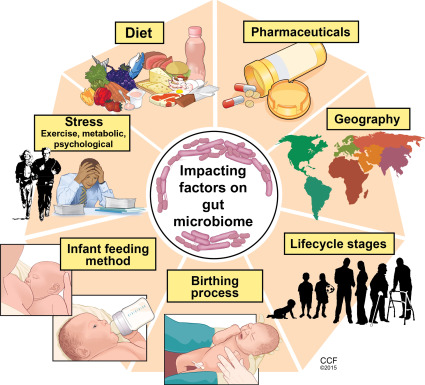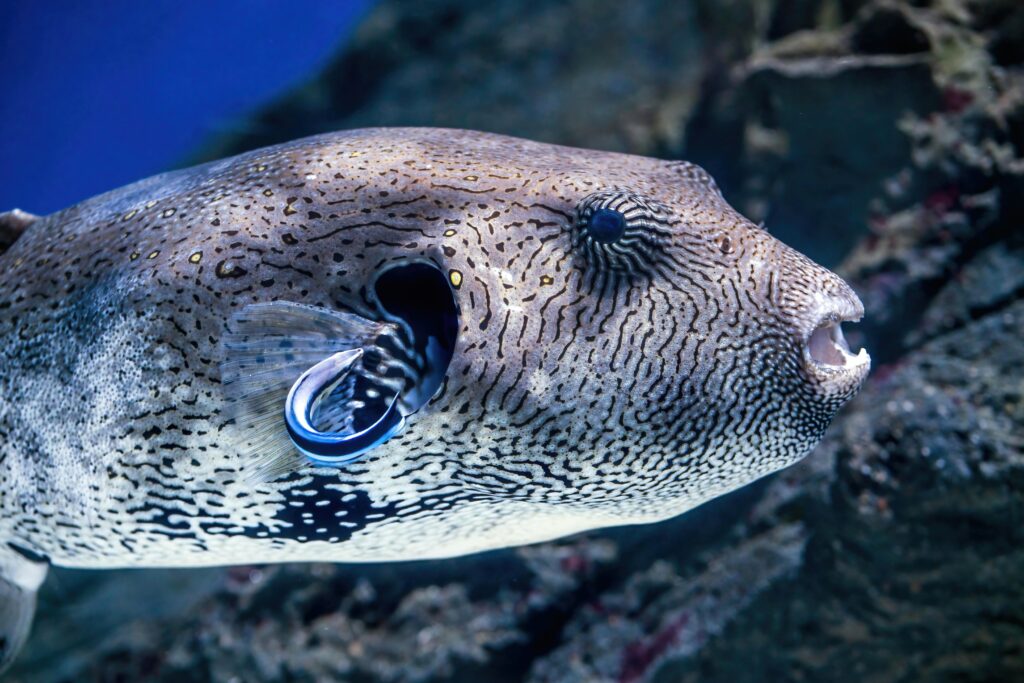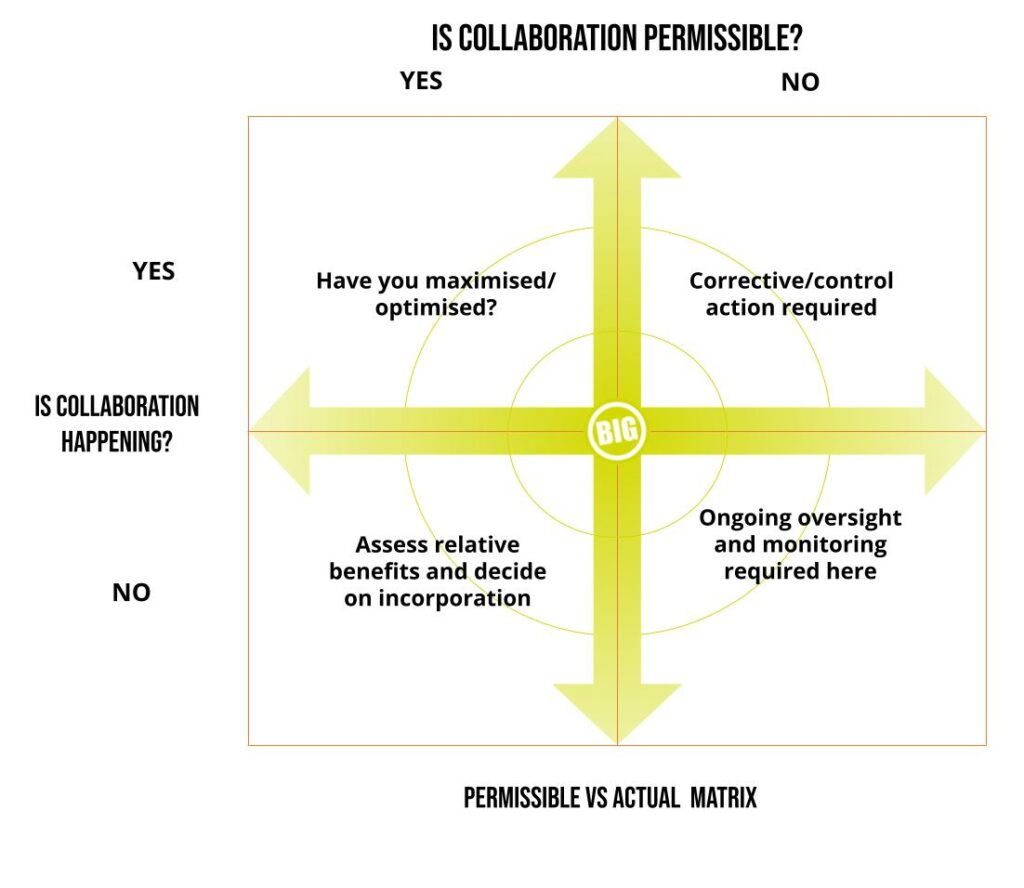

Your gut microbiome is central to your health.
"Although many different types of microbes live inside you, bacteria are the most studied.
In fact, there are more bacterial cells in your body than human cells. There are roughly 40 trillion bacterial cells in your body and only 30 trillion human cells. That means you are more bacteria than human.
What's more, there are up to 1,000 species of bacteria in the human gut microbiome, and each of them plays a different role in your body. Most of them are extremely important for your health, while others might cause disease.
Altogether, these microbes may weigh as much as 2–5 pounds (1–2 kg), which is roughly the weight of your brain. Together, they function as an extra organ in your body and play a huge role in your health.
The gut microbiome affects the body from birth and throughout life by controlling the digestion of food, immune system, central nervous system and other bodily processes."
See: Why the Gut Microbiome Is Crucial for Your Health
See: Gut Microbiome: Profound Implications for Diet and Disease
By now, you are probably wondering what gut microbiome has to do with strategy? The analogy is with your business ecosystem. IMHO this is one of the most under-recognised elements of an effective strategy.
Two stories to illustrate aspects of an ecosystem before I get into the meat of my post.
Calvaria Major

At the time of the Dodo, the Calvaria Major tree grew on the island of Mauritius. It was common at that time. By the 1970s, only a dozen or so of these trees – all more than 300 years old - were still growing. They produced healthy-looking seeds but none germinated.
American ecologist Stanley Temple, studying Mauritius's ecology in the mid-1970s, came up with a link between the decline of the Calvaria major trees and the disappearance of the Dodo. He concluded that the tree's large fruit had been eaten by the Dodo in times past. The Dodo's stone-filled gizzard exerted a powerful crushing pressure on the seed's thick-walled protective coating. When eventually deposited, the protective layer was cracked, and the seed was able to germinate.
Experiments have subsequently been conducted to see if feeding the seeds to turkeys may result in germination.
(The above abstracted from: https://creation.com/almost-as-dead-as-a-dodo)
Following on Covid and other disruptions, are your symbiotic ecosystem relationships all still intact?
The Cleaner Wrasse Fish

When you read academic papers on the wrasse fish, you start wondering if it is almost as popular for experiments as laboratory mice (see links to some academic papers below).
The cleaner wrasse fish has a symbiotic relationship with other fish:
"The relationship between cleaner wrasse and reef fish has long been one of the textbook examples of mutualism, a partnership in which both individuals benefit. In this relationship, the cleaner wrasses set up "cleaning stations" where they eat parasites and dead skin cells off of willing reef fish." More here.
"However, the cleaner wrasses' preferred food source is actually a type of mucus given off by the reef fish. Because of this, the cleaner wrasses sometimes deviate from mutualistic parasite removal by eating mucus given off by the client (Grutter et al. 2003).
This cheat disrupts the balance of the symbiotic interaction, making participation detrimental to the reef fish that need the mucus for protection from bacteria and parasites. If this cheating behavior were to become the norm for cleaning wrasses, the reef fish would eventually stop participating because the partnership is no longer beneficial for them.
Fortunately, both cleaner wrasse and reef fish have developed behaviors that limit the detrimental effects of cheating and keep the mutualistic relationship stable." (reference as above)
Are the symbiotic relationships you rely on in your business ecosystem mutually beneficial? Is anyone cheating?
Investopedia.com defines it broadly as follows:
"In effect, the business ecosystem consists of a network of interlinked companies that dynamically interact with each other through competition and cooperation to grow sales and survive. An ecosystem includes suppliers, distributors, consumers, government, processes, products, and competitors."
While this is a good starting point, there are other ways to view it. Re-generate.org talks of a purpose-driven ecosystem. They provide a handy diagram of the elements that they see as making up a "purpose-driven" one for organisations in the UK:

Re-generate identify eight critical areas of the business ecosystem and organisations that fall within it.
The broad categories they map are:
They also provide a handy directory of the organisations that are shown in their diagram. It can be accessed here:
Based on my own observations and experience, we need to take a broader and, at the same time, more detailed research-based approach.
Often elements of the business ecosystem are emergent and informal. They may be useful or not. They may be desirable or not. They usually arise when management is absent, or they turn a blind eye or are unobservant, or plain don't care. Below I provide a few preliminary matrices that can potentially help us build a comprehensive and coherent ecosystem.
Before that, though, here are a few examples that might provide some food for thought/discussion:
A large hospital has canteens or shops for patients. Informal hawkers enter the hospital with patients and their families and sell popular products that are often unavailable from the hospital shop. Or, they sell some of the same but at lower prices. If you were a hospital administrator, would you take steps to stop this?
You operate a convenience food outlet in a tough neighbourhood. Police patrols are generally few and far between. Staff provide bobbies on the beat with complimentary coffee and doughnuts on-site. Police patrols in your area become more common. Staff feel a greater sense of safety, and crime is less frequent. Do you turn a blind eye?
You operate a hotel. There is a taxi rank outside for formal taxis. When things get busy, though, there are often none available. Front-desk staff find informal taxis for guests. These are cheaper, so guests – particularly regulars - don't complain. However, the vehicle owner is unlikely to have a PDP or equivalent (Professional Driver permit) or liability insurance. What should you do?
You own another hotel. Security is tight, and access is controlled. People book into your hotel as regular guests. They knock on the doors of other hotel rooms and pretend to be looking for a friend. They are generally not unattractive. They enter into a discussion. Things sometimes develop from there. What do you do to control this?
You operate a B2C business. However, you have customers who buy from you in bulk and resell. Do you explore how you can help them and perhaps tailor some of your offerings, e.g. pack sizes, to better meet their needs?



Paying close attention to your business ecosystem generally pays off. Either in revenue generation or risk reduction/mitigation.
Give Martin Johnson or Bryce Biggs a call for an initial no-obligation discussion on enhancing your ecosystem. We can work with you to explore the matrices above within the broader context of our Pivot Now!™ framework within the Wicked Challenges™ context and deploy the Six-ITs.
